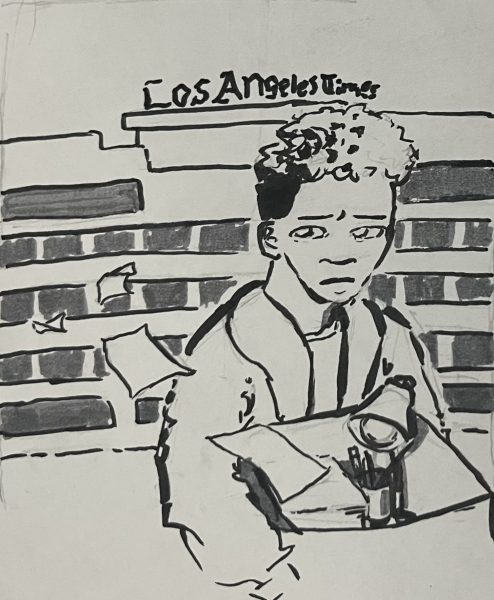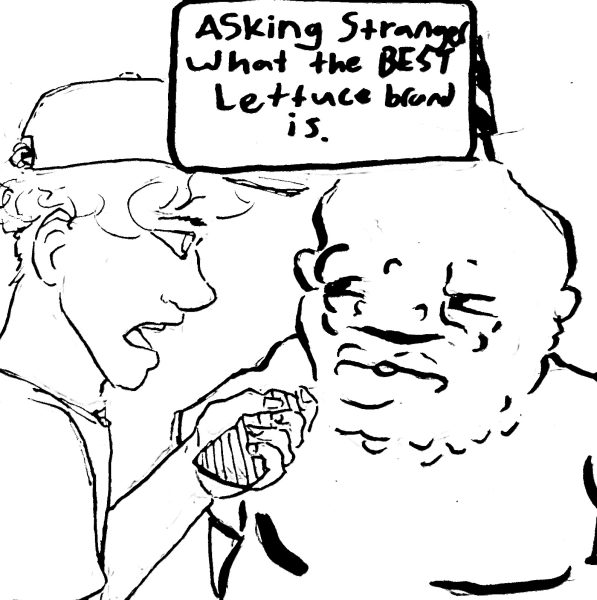Students Should Be Supporting UTLA
October 22, 2018
With the possibility of a teachers’ strike as early as Oct. 6, the student body has grown more concerned with what that might entail. There are, without a doubt, serious consequences to students if teachers and other faculty leave their post, and many students aren’t entirely sure what these consequences are.
Many students don’t know why teachers are planning to strike.
Senior Alexis Martinez, when asked about what she thought of the strike, said, “I’m not really sure. I don’t know much about it.”
Senior Jacob Manzella mirrored the response by saying, “I feel like my opinion is most kids don’t understand.”
However, for as much confusion and and distress the murmurs of a strike have caused, it must be said that the strike, if it happens, will have overall good results for teachers and students.
Some students are under the misconception that a strike is preferable to going to school. Though the fantasy of no school for several days is nice, it would have a harsh impact on AP students and those applying to college.
When asked about the possibility of a strike occuring, union representative Wendy Sarnoff said, “Number one, we don’t want to strike. I mean, if we can avoid this, then let us.” The staff of the school work here out of passion. With an understanding of the teacher’s demands, it becomes clear how the teachers hold the interest of students in mind too.
The conflict between the United Teachers of Los Angeles and the board of LAUSD comes from overcrowded classes, unsanitary school conditions, poor student access to nurses or counselors and unsustainable teacher salaries.
The issue of class size is a major one, and is one that LAUSD desperately needs to address, as the district has one of the largest class size averages in the nation. LAUSD secondary schools have an average of nearly 40 students to a classroom. Packed classes result in less time for struggling students to get the personal assistance they might need. It also creates larger work loads for teachers, who may struggle to balance work and any engagements outside of school. Those outside activities also go beyond leisure time. Teachers struggle to find time for letters of recommendation and clubs that have activities outside of school time. A few less students in each class could give them time for such activities.
Teachers are also advocating for an increase in availability of nurses and counsellors so the students can be better cared for in high school and better prepared for the future. Despite how Venice has an onsite college counselor and a nurse that’s available four times a week, Venice is an exception. Some other schools in LAUSD have nurses available for only one day out of the week and a staff of counselors that doesn’t include one specifically for college.
A common claim that the LAUSD board has made is that UTLA is only interested in the pay raise that UTLA mentions as one of their demands. This is not the whole truth.
“Teachers have not gotten a raise in this district for more than 15 years,” said Ms. Sarnoff. “To say that the teachers are getting a raise in this is not true.” She explained that the federal government has already paid LAUSD for the Cost-of-Living Adjustment. Teachers are supposed to receive an annual “C.O.L.A.” which is meant to increase pay and counteract the effects of inflation on living. “It’s money that the federal government gives to everybody else, just ask retired teachers and principals. But teachers do not. So the district is sitting on our money, that they’ve already gotten and have a $1.8 billion overage.”
The district advertises itself as offering UTLA an increase in pay of six percent that it reports the Union is unsatisfied with. However, when new teacher Ahsan Minhas was asked about it, he described that the district was only offering a pay increase of about three percent, with an additional three percent only being available when additional goals are met by public schools.
Even though a strike could slow down the progress of classes, students gain more than they lose if the union’s demands are met. The best thing for the students to do, in the interest of the teachers and themselves, is to wholeheartedly support the union. Popular support could help all demands to be met and could make the strike end sooner. The strike’s consequences can be minimized with support, but it must be a unanimous action. So how is the student body to support its teachers?
Ms. Sarnoff was clear that one of the most important things for students is getting their parents to support the strike. To the district, the opinion of the students is less important than their parents and guardians. Because, fundamentally, parents pay taxes that fund schools, they have a greater say over the direction of the district and school than the students who attend them. Go home, tell your parents about the issues the teachers are fighting for and get them to call members of the district.
As for us, the student body, we must all accept that being happy that there might be no school helps no one. Fighting against your teachers and the interest of the school won’t improve either one.






